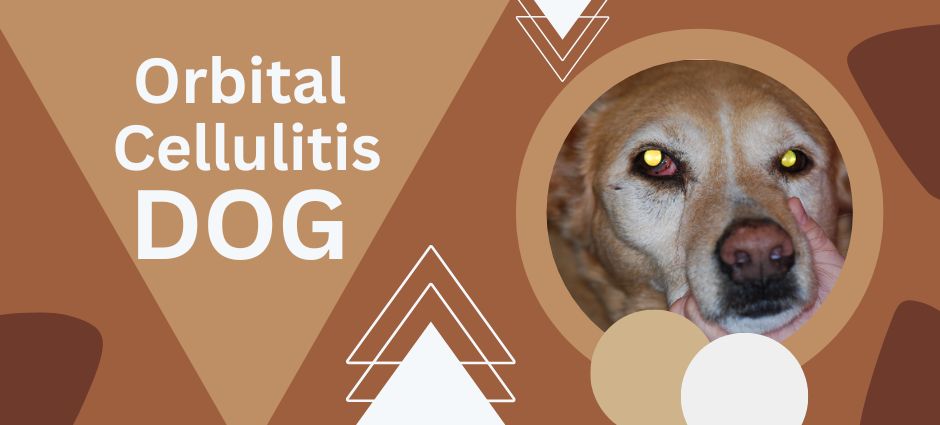Dogs bring joy, companionship, and an unending source of happiness to our lives. As responsible dog lovers, it’s our duty to ensure they remain healthy and happy.
One of the less common but serious conditions that can affect our pup friends is orbital cellulitis dog.
In this blog, we will delve into the specifics of orbital cellulitis in dogs, discussing its causes, symptoms, and available treatments.
So, let’s scroll it down for more information!
What is Orbital Cellulitis Dog?

Orbital cellulitis dogs is an inflammation and infection of the tissues surrounding the eye. This condition can be very painful and may lead to serious complications if not treated promptly. It’s essential to recognize the signs early to ensure your dog receives the appropriate care.
Also Read: Harmful Eye Diseases in Dogs.
Orbital Cellulitis Dog Causes
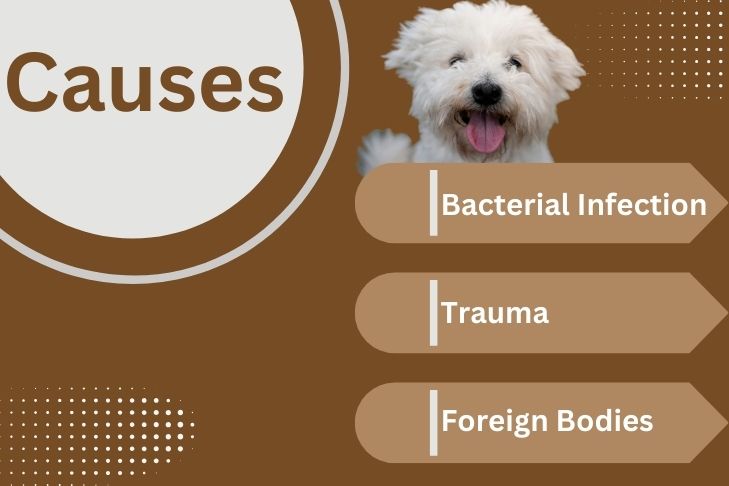
What is the main cause of orbital cellulitis in dog? Check these:
1. Bacterial Infection
The first thing to consider for orbital cellulitis in dogs is always a bacterial infection. Bacteria can enter the orbital area through a wound or infection in the mouth, nasal cavity, or even from an infected tooth. Once the bacteria invade the orbital tissues, they cause inflammation and pus formation.
2. Trauma
Any injuries near the eye can become a cause for the disease. Trauma could result from a fight with another animal, an accident, or even from scratching or rubbing the eye excessively.
3. Foreign Bodies
By foreign bodies, we mean the invasion of things like grass or debris in the eye can easily cause damage to tissues, which leads to infections.
4. Systemic Infections
Sometimes, systemic infections can spread to the orbital area. Conditions like respiratory infections, sinusitis, or other systemic illnesses can lead to the development of orbital cellulitis.
Recognizing Orbital Cellulitis Dog Symptoms
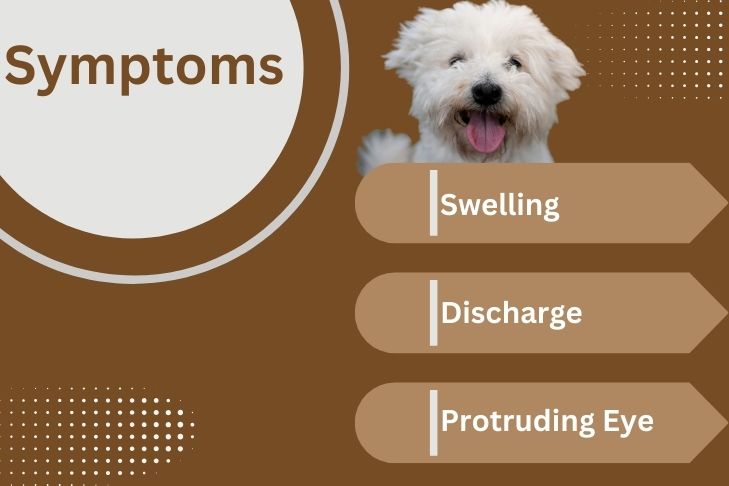
Early detection of orbital cellulitis dogs is crucial for effective treatment. Below is a short list of some very common symptoms you should stay wary of:
1. Swelling and Redness
One of the most noticeable signs of orbital cellulitis in dog is swelling and redness around the eye. The affected area may appear puffy and inflamed.
2. Pain and Discomfort
Your big white dogs may paw at the affected eye, rub their face against surfaces, or be reluctant to eat due to discomfort.
3. Protruding Eye
In severe cases, the infected tissue can push the eye forward, making it appear bulging or protruding. This condition, known as proptosis, requires immediate veterinary attention.
4. Discharge
There may be a discharge from the eye, which can be clear, yellow, or even pus-like.
5. Behavioral Changes
Dogs suffering from orbital cellulitis may exhibit changes in behavior. They might become more withdrawn, lethargic, or irritable due to the pain and discomfort.
Orbital Cellulitis Dog Treatment Plus Diagnosis
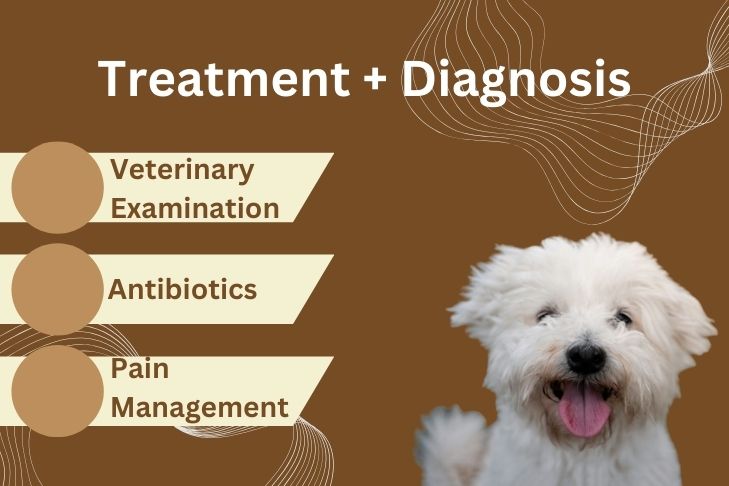
How do you treat orbital cellulitis in dogs? If you suspect your dog has orbital cellulitis, it’s important to seek veterinary care immediately. Early diagnosis and treatment are essential for preventing complications and ensuring a full recovery.
1. Veterinary Examination
The veterinarian will conduct a thorough examination of your dog’s eye and surrounding tissues. They may also perform diagnostic tests such as blood work, culture tests, and imaging studies (like X-rays or ultrasounds) to determine the cause and extent of the infection.
2. Antibiotics
Can orbital cellulitis be cured? Well, kind of yes. The type and duration of antibiotic therapy will depend on the severity of the condition and the specific bacteria involved.
Learn about the impact of the dosage of aspirin for dogs.
3. Pain Management
The veterinarian may prescribe pain relief medications to help keep your chunky dog comfortable during the healing process.
4. Surgery
In severe cases, surgical intervention may be necessary. Surgery might involve draining abscesses, removing foreign bodies, or addressing any underlying dental issues contributing to the infection.
5. Supportive Care
Providing supportive care at home is also important. Ensure your dog gets plenty of rest, follow any medication schedules strictly, and keep the affected area clean and dry.
How to Prevent Orbital Cellulitis Dog
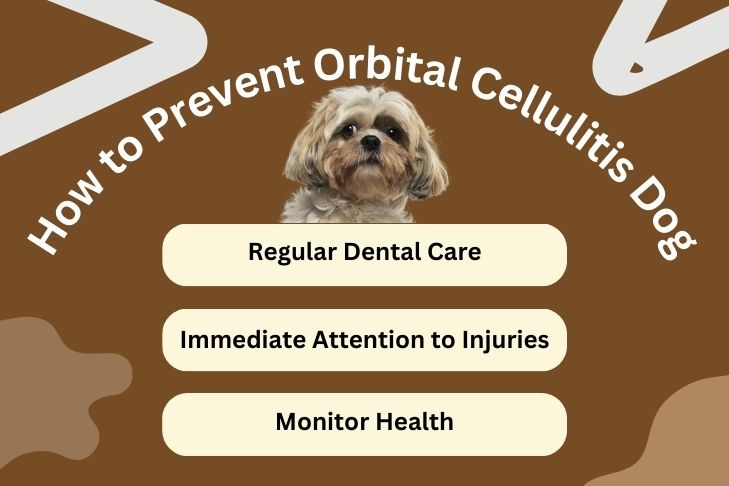
While it’s not always possible to prevent orbital cellulitis, there are steps you can take to reduce the risk:
1. Regular Dental Care
Maintaining your dog’s oral hygiene is crucial. Regular dental check-ups and cleanings can help prevent infections that might spread to the orbital area.
2. Immediate Attention to Injuries
Promptly addressing any injuries near the eye can prevent infections.
3. Monitor Health
Regular veterinary check-ups can help detect underlying health issues that might predispose your dog to infections.
Orbital Cellulitis Dog: Conclusion
Orbital cellulitis dogs is a serious condition that requires immediate veterinary attention. By understanding the causes, recognizing the symptoms, and seeking prompt treatment, you can help ensure your dog recovers fully and remains healthy.
Remember, your veterinarian is your best resource for managing your dog’s health, so don’t hesitate to reach out if you have concerns about orbital cellulitis or any other health issues.



